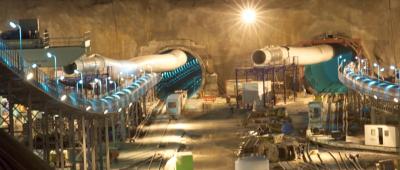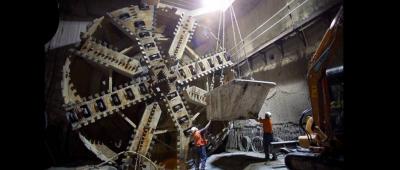Tunnel Boring Radar (NeTTUN)
Themes: Radar technology
Antenna design and imaging of the ground in front of a tunnel boring machine
Currently the construction of tunnels is heavily reliant on time and cost expensive experts, brought in outside of the awarded contractor's team, to analyse data provided by existing ground prediction systems. These outputs are insufficient and result in tunnelling projects working in practically continuous "moderate risk" warning scenarios that operators tend to ignore after a number of weeks of apparently safe progress, resulting in relatively frequent geotechnical accidents. Most existing ground prediction methods require stopping the excavation for several hours, which relegate them to a once per week activity and at best performed during planned maintenance operations. Overall this by far exceeds the available nominal idle time corresponding to the construction of a ring in a segmental lined tunnel.
Radar can offer high quality imaging of the ground ahead over a relatively short distance, which is well adapted to tunnelling in a built environment. The work performed on the NeTTUN radar subsystem starts with the development of specific antennas and signal processing algorithms. A special design is required in order to achieve high performance although the system is embedded in an unfavourable environment (metallic structure, vibrations, etc.). Advanced electromagnetic simulations on modelled geotechnical configurations have been used to optimise the antenna design.
For more information, see the
project homepage.

Project data
| Researchers: | Alexander Yarovoy, Jianping Wang |
|---|---|
| Starting date: | September 2012 |
| Closing date: | September 2016 |
| Sponsor: | EU FP7 |
| Partners: | Consortium of 21 Industrial, Research & Development laboratories and SME organisations |
| Contact: | Alexander Yarovoy |